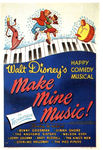 Make Mine Music is the eighth full-length film of the Disney studios. Released on the 15th of 1946 in the United States, it is the first film released during the post-war years. During almost four years, Disney studios had been requisitioned by the American army to create propaganda cartoon movies as well as others speaking about the friendship between the United States and the Latin America (Saludos Amigos, The Three Caballeros), patriotism was then current ! These various films allowed the studios to continue its activities during the war but engendered only very few profits, European market being totally closed. The solution was to realize low-cost films (Pinocchio, Fantasia or Bambi had cost a real fortune). And so during still some years the studio only released "package" films. Package films were in fact a series of short films put the one behind the others in order to create a full-length film of one hour and a half. Inaugurated in 1943 with Saludos Amigos, this style continued until 1949 with The Adventures of Ichabod and M. Toad.
Make Mine Music is the eighth full-length film of the Disney studios. Released on the 15th of 1946 in the United States, it is the first film released during the post-war years. During almost four years, Disney studios had been requisitioned by the American army to create propaganda cartoon movies as well as others speaking about the friendship between the United States and the Latin America (Saludos Amigos, The Three Caballeros), patriotism was then current ! These various films allowed the studios to continue its activities during the war but engendered only very few profits, European market being totally closed. The solution was to realize low-cost films (Pinocchio, Fantasia or Bambi had cost a real fortune). And so during still some years the studio only released "package" films. Package films were in fact a series of short films put the one behind the others in order to create a full-length film of one hour and a half. Inaugurated in 1943 with Saludos Amigos, this style continued until 1949 with The Adventures of Ichabod and M. Toad.Make Mine Music is composed with eleven short films of uneven quality. Some are real jewels: : The Martins and the Coys, All the Cats Join In, Casey at the Bat (which will continue in 1954 with, Casey Bats Again), Peter and the Wolf, Johnny Fedora and Alice Bluebonnet, The Whale Who Wanted to Sing at the Met. On the other hand, other are boring and rather inferior : Blue Bayou (realized as a continuation of Fantasia), Without You, Two Silhouettes, After You've Gone. The good short films were more numerous, we can say that this film remains interesting for any animation passionate.
Make Mine Music takes also part of the rare full-length animated films Disney didn't released in DVD in France (as Song of the South). It's a bottom when we know that Disney France set up a number collection which will never be complete (Make Mine Music is the number eight and Song of the Souththe number nine). The reason of this absence is apparently due to a law problem about the French soundtrack of the film, the soundtrack where we could find the voice of Edith Piaf on the short filmJohnny Fedora and Alice Bluebonnet. The Americans had more luck than us, the film released there but truncated by one of its short films, The Martins and the Coys, considered too violent and making the apology of firearms!
05 août 2008
Saludos Amigos
 Saludos Amigos, the sixth Great Classic of Disney studios released on February 6th, 1943. Its production began in 1941, after the return of a group of artists of the studios of a great journey in South America. The aim of this journey was to promote the American values and to ward off the rise of the Nazi influence in the various countries of the South of the continent.
Saludos Amigos, the sixth Great Classic of Disney studios released on February 6th, 1943. Its production began in 1941, after the return of a group of artists of the studios of a great journey in South America. The aim of this journey was to promote the American values and to ward off the rise of the Nazi influence in the various countries of the South of the continent.Time were hard in Disney studios, after the closing of the European market in 1939, a general strike bursts into 1941, most of the employees claimed the bonuses which had been promised to them during the production of Snow White and the Seven Dwarfs. Instead of satisfying his employees, Disney had then decided to put in construction new studios in Burbank, considering those of Hyperion Avenue too small. The proposition of the American government to send Walt Disney and his team of artists to South America arrived just at the right moment and permit him to go away from the conflict. Among the members who accompanied him we found Lee and Mary Blair, Franck Thomas or Marc Davis. From this journey will be born Saludos Amigos but also The Three Caballeros released in 1945.
Saludos Amigos is particular in several points. First it is the shortest Great Classic ever produced, 46 small minutes! Then it is the only Great Classic where appears Walt Disney himself, playing in the various live scenes incorporated between every animated short film. The time was to do savings, connect several short films between them was the best solution in order to don't to spend too much money. We will call very fast this kind of full-length film:package films. Saludos Amigos is composed of four short films :
- Lake Titicaca : Donald is playing the role of a lambda tourist who is visiting the surroundings of the famous lake.- Pedro : We are following the adventures of a small plane crossing The Andes to deliver the mail.- El Gaucho Goofy : Goofy puts himself in the skin of an American Cow Boy who find himself in the Pampa.- Aquarela Do Brasil : Donald meets Jose Carioca, a parrot possessed by samba, who makes Donald taste the pleasures of his country.
Saludos Amigos will be very well received at its release in February 1943, even if someone blamed it for being much less accomplished than the ancient Great Classics. The film will even be a real triumph in South America. It was three times nominated in Oscars ® for the best music, the best sound and the best song (categories in which the animated films of the studio are often going to meet themselves).
o

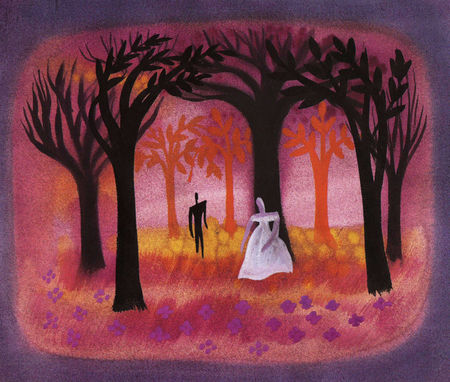


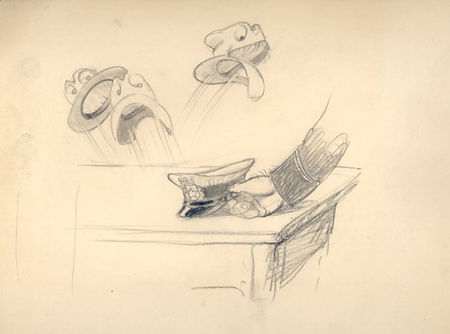
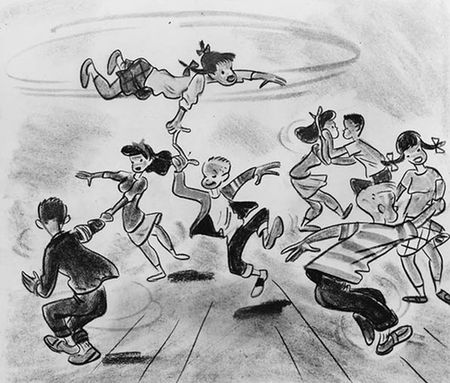

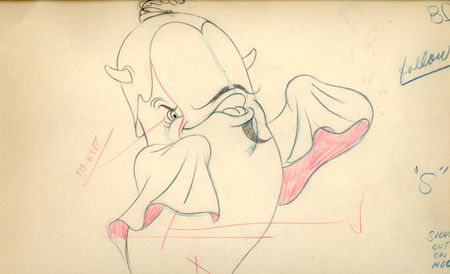
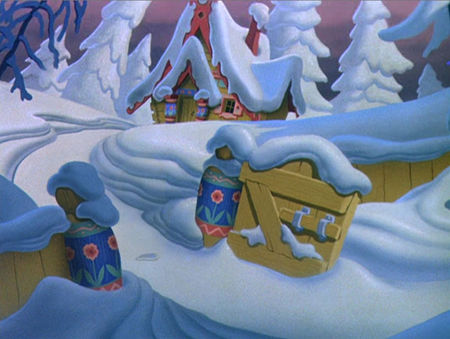

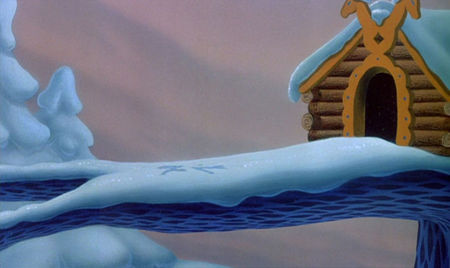
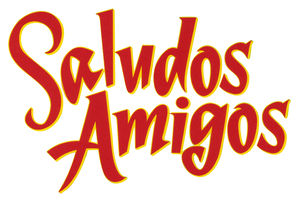

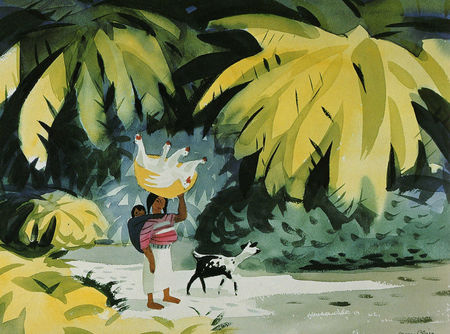


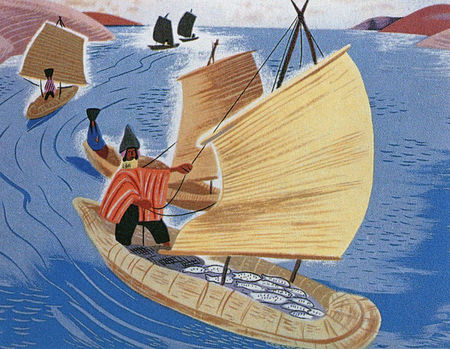
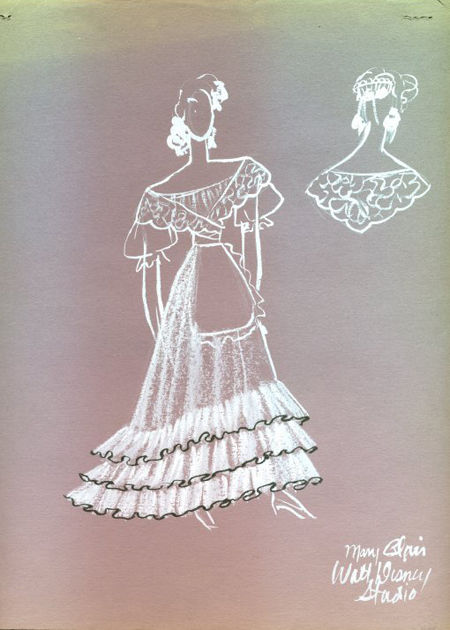



Nessun commento:
Posta un commento